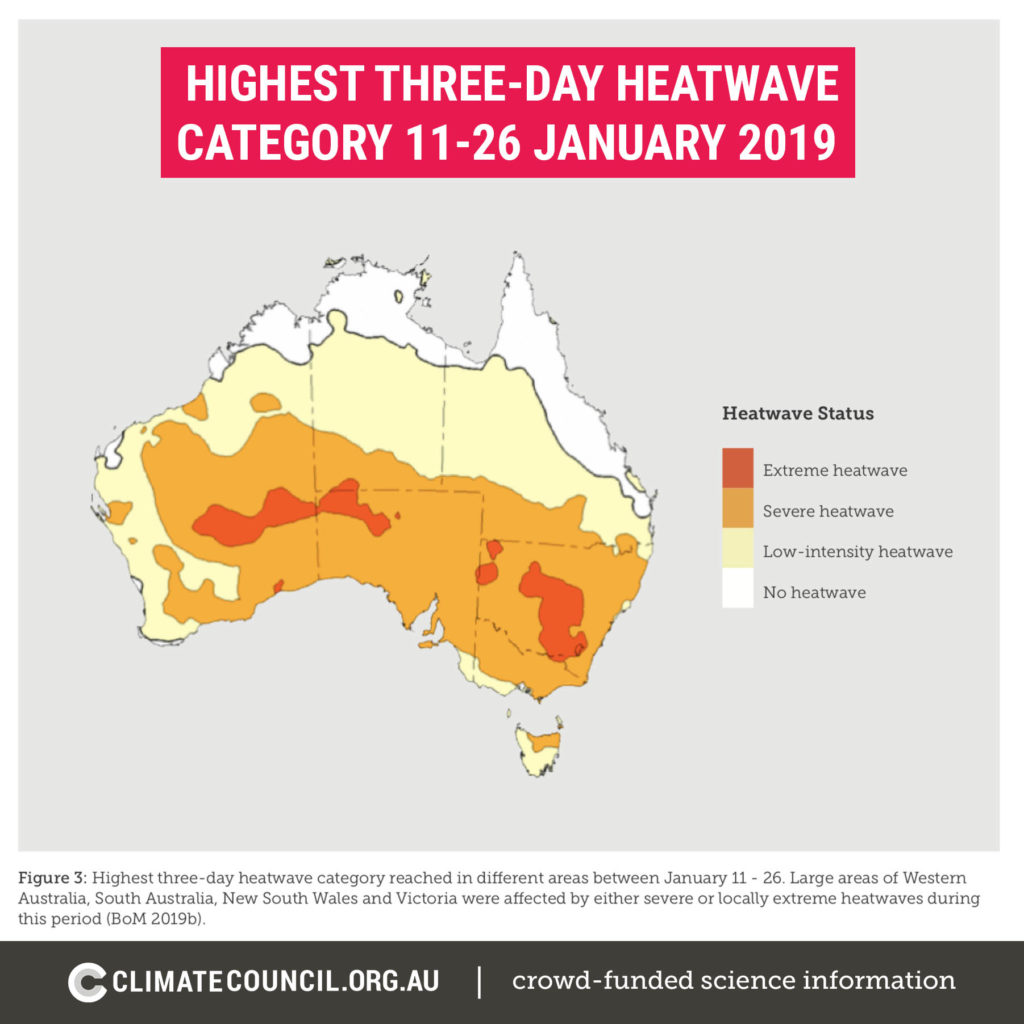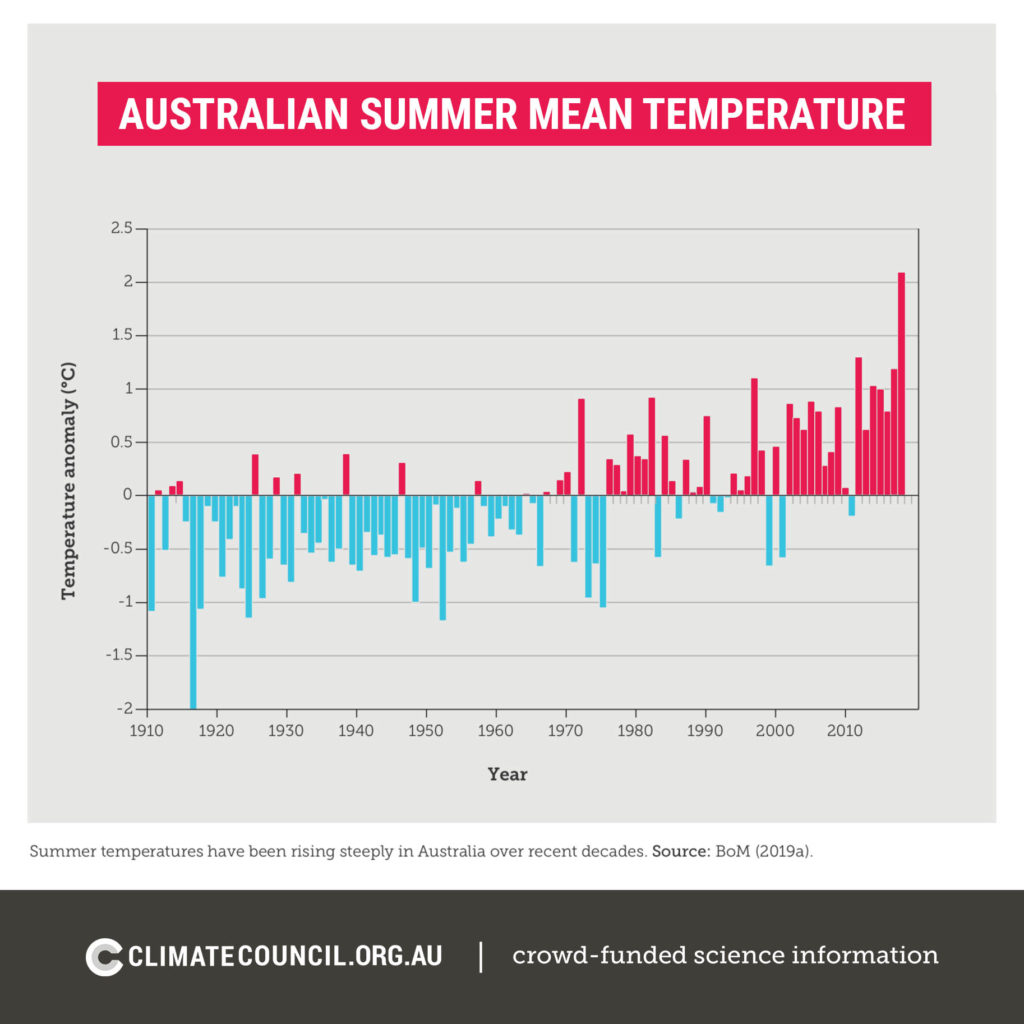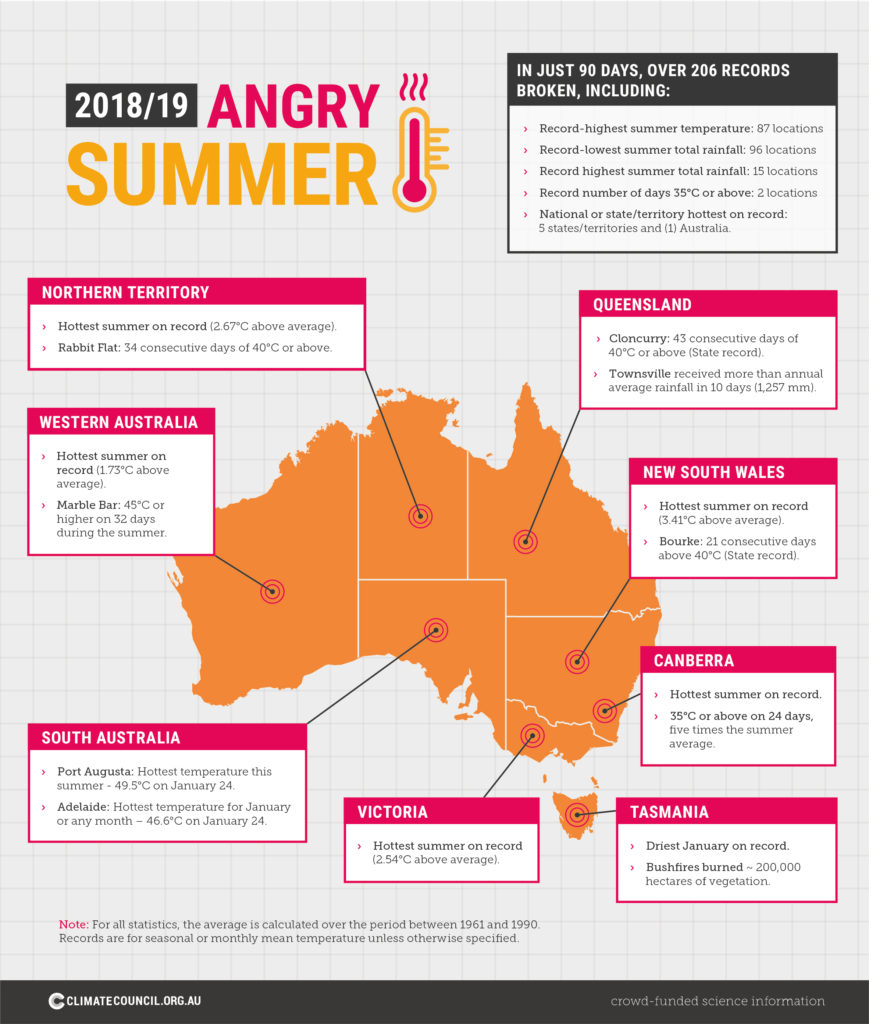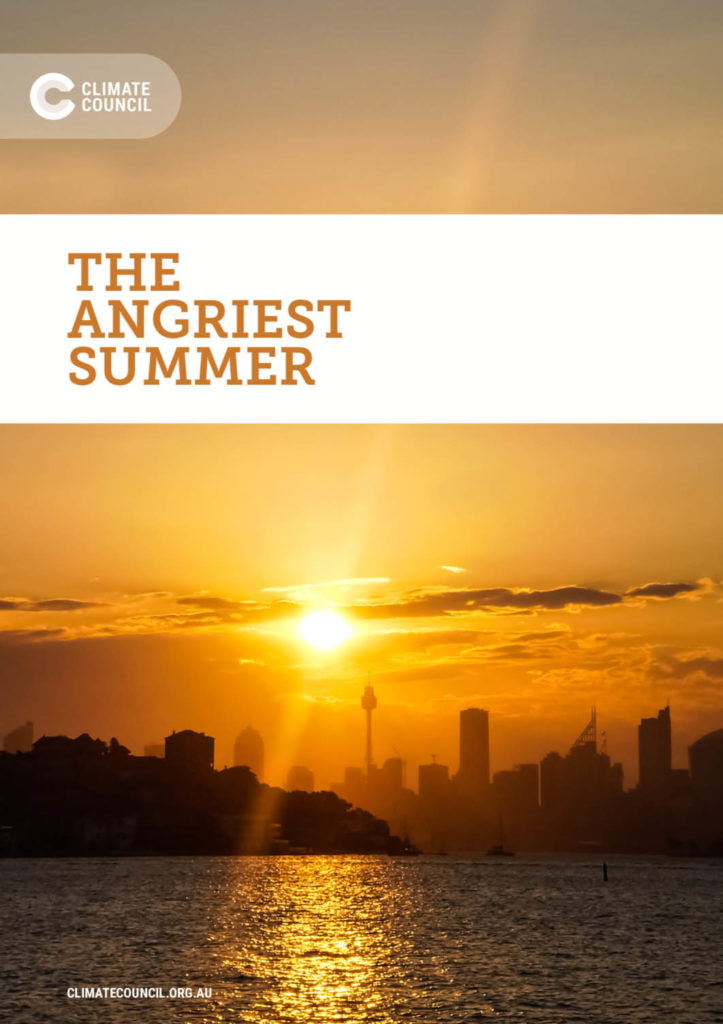This content is more than 5 years old
The Australian summer of 2018/19 marked the return of the Angry Summer with record-breaking heat and other destructive extreme weather events.
The summer was characterised by prolonged, continental-scale heatwaves, hot days, drought conditions in eastern Australia and bushfires throughout Australia, particularly in Queensland and Tasmania and parts of Western Australia, Victoria and New South Wales.
Bushfire seasons started much earlier, lasted longer, and burned in areas that would not be expected to burn, despite there not being an El Niño event. Heavy rainfall and flooding inundated northern Queensland in late January and early February.
Download the report
KEY FINDINGS:
The Angry Summer of 2018/19 was characterised by prolonged, continental-wide heatwaves and record hot days, bushfires throughout Australia, and heavy rainfall and flooding in northern Queensland.
- The record-breaking heat in Australia over the 2018/19 Summer is part of a long-term warming trend from the burning of fossil fuels and land clearing.
- For many years scientists have warned that climate change is driving worsening extreme weather. The Angry Summer is another example of the consequences of climate change today.
- Protecting Australians from worsening extreme weather requires phasing out fossil fuels and accelerating the transition to renewables and storage technologies.

Serious bushfires raged across the continent through the summer.
- Every state experienced serious bushfires with properties lost in Queensland, New South Wales, Victoria and Tasmania.
- New South Wales experienced serious fires through autumn and winter, the Queensland fire season lasted much longer than normal and the Tasmanian fire season started early.
- Pristine rainforest in Queensland and Tasmania, previously not prone to bushfires, suffered devastating damage.
The Angry Summer was driven by greenhouse gas pollution from the burning of fossil fuels, like coal, oil and gas, and land clearing.
- The record-breaking heat in Australia over the 2018/19 Summer is part of a long-term warming trend from the burning of fossil fuels and land clearing.
- For many years scientists have warned that climate change is driving worsening extreme weather. The Angry Summer is another example of the consequences of climate change today.
- Protecting Australians from worsening extreme weather requires phasing out fossil fuels and accelerating the transition to renewables and storage technologies.

The window to effectively tackle climate change is rapidly closing but many of the solutions we need are already at hand.
- Tackling climate change effectively requires credible national policy to drive down greenhouse gas pollution from fossil fuels across all sectors: electricity, transport and industry, as well as credible policies to address emissions from agriculture and land use.
- Solutions include accelerating the uptake of renewable energy and storage, investing in energy efficiency, and switching away from direct fuel combustion to electrification powered by renewables in transport, industry and buildings.
- The Federal Government has no credible climate policy in place with greenhouse gas pollution increasing over the past four years.

